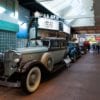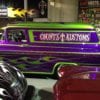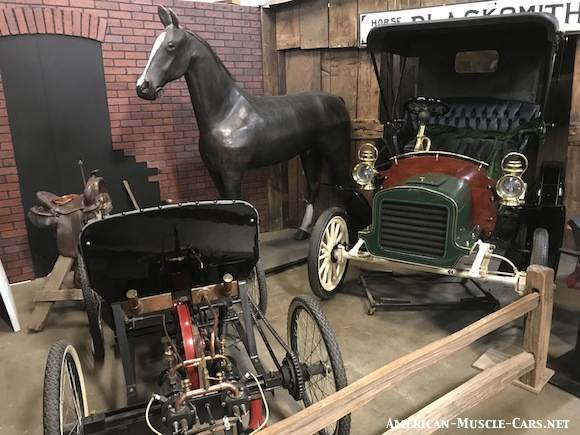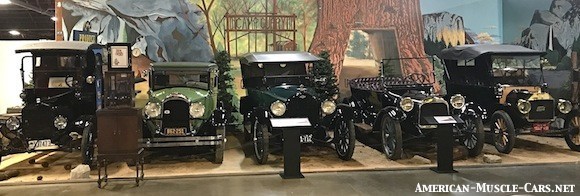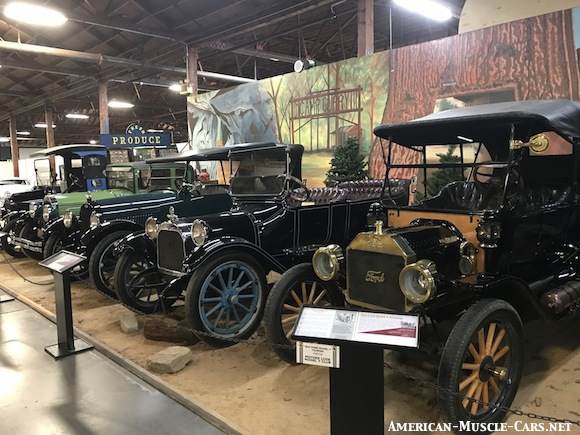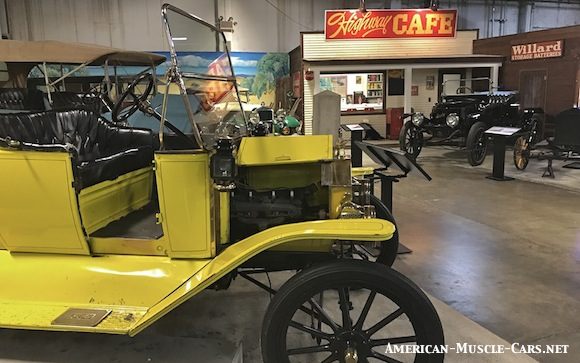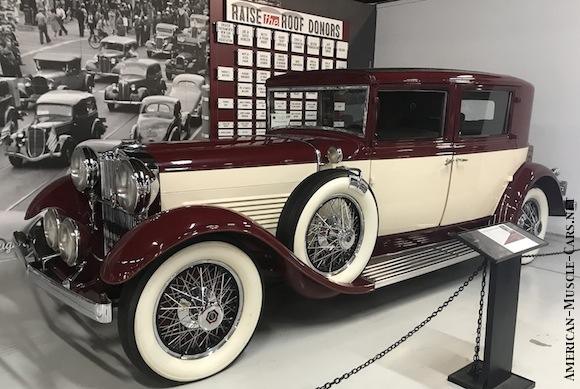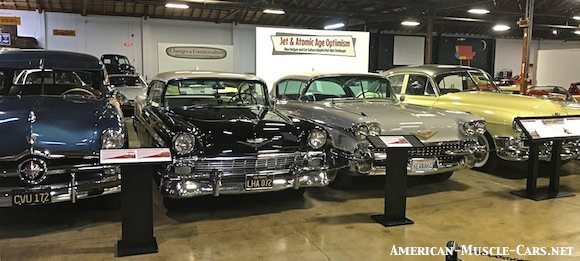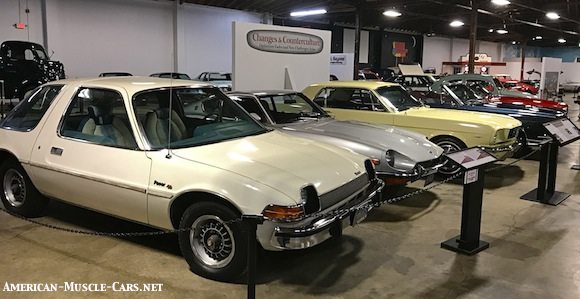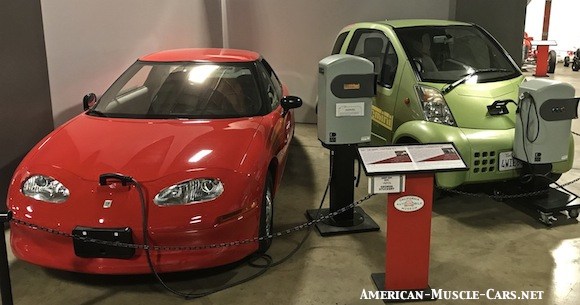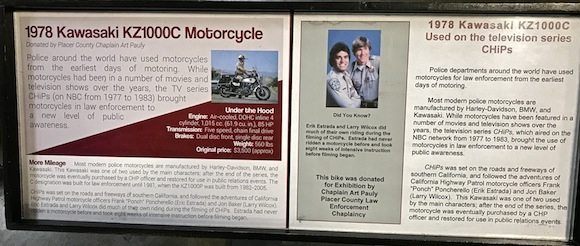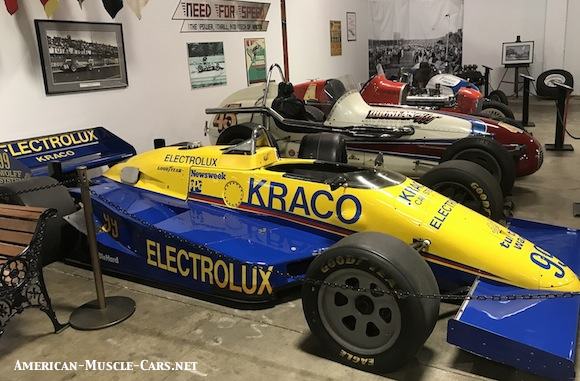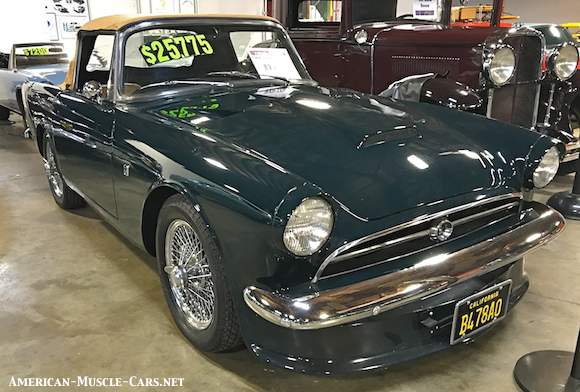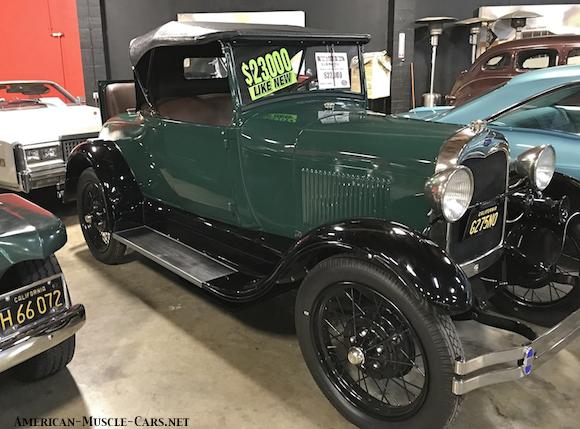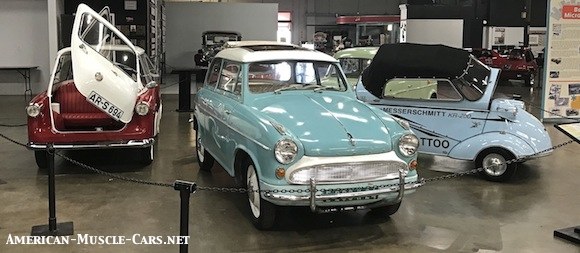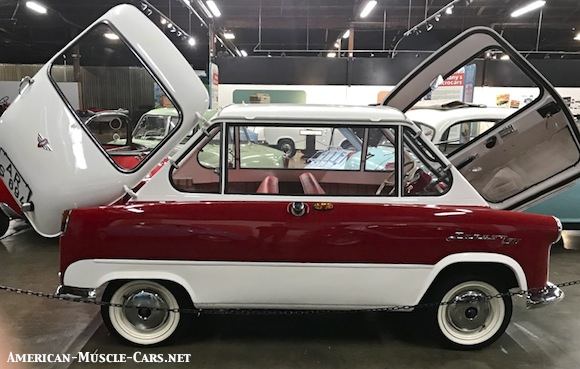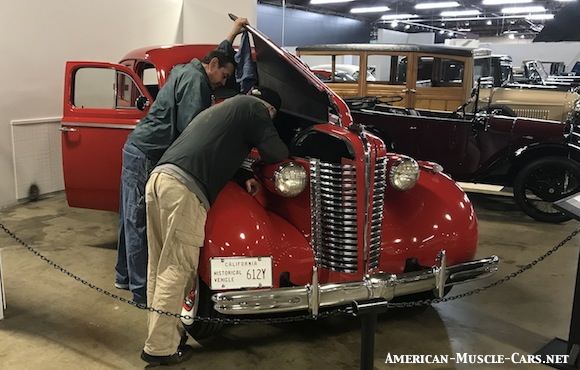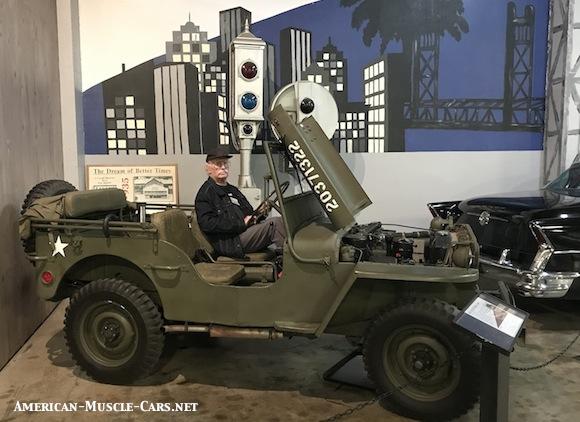California Automobile Museum
2200 Front St., Sacramento CA
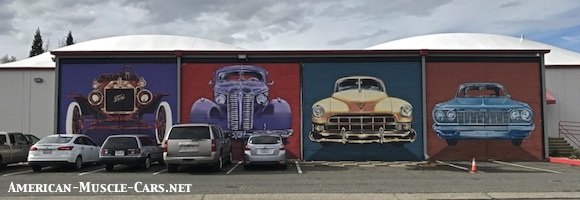
We visit the California Automobile Museum
The California Automobile Museum is located in Sacramento CA’s historic ‘Old Town’ district, which is appropriate considering the Museum’s focus on history. Automotive history, yes, but also U.S., and even world history as told through the story of the car. I was invited to tour this amazing, and eclectic collection of 150+ cars, trucks motorcycles, engines, memorabilia, and more. I was immediately impressed with the wide-open spaces of this enormous 72,000-square-foot museum. While broken into rooms or sections, and there are well over a hundred cars under one roof, they’re not crowded together. There’s generally plenty of room to move around and view the cars from multiple angles. The vehicles are nicely presented, most behind ropes, and many as parts of themed displays and/or dioramas. Let’s take a stroll through this wonderful museum.
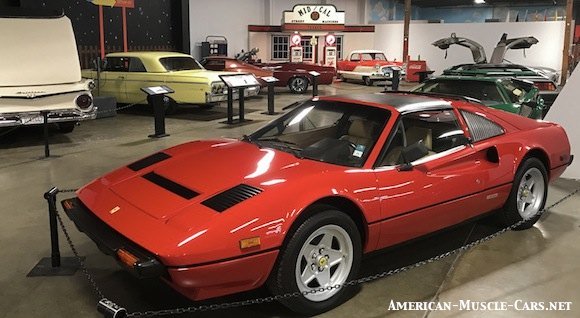
ABOVE: This ’85 Ferrari 308 GTSi evokes memories of the old ’80s TV show Magnum P.I., while also demonstrating the captivating beauty that always seems to exude from a Ferrari. It also speaks of the decadence of the 80s, as does the Lamborghini Countach and the Delorean sitting next to it.
BELOW: The California Automobile Museum is well laid out, the cars are well-presented and smartly-lit, and there is plenty of room to move around without feeling crowded.
ABOVE & BELOW: Many of the cars are arranged by era, in more-or-less chronological order. This allows you to ‘walk through the ages’, and see how cars progressed from year-to-year, decade-to-decade.

California Automobile Museum – The History of Cars

ABOVE: The world’s first automobile is supposed to be the 1886 Benz Patent-Motorwagen. With this primitive trike powered by a single-cylinder engine, Karl Benz literally patented the invention of the car. Just 25 were built, but this one is a reproduction.
BELOW: The contraption on the left is a working replica of Henry Ford’s first motorized vehicle, the 1896 Quadricycle. To the right is a 1904 Ford Model C Runabout, set in a turn-of-the-century blacksmith shop, a typical place to get your car repaired in those days.
ABOVE & BELOW: Brass Era cars (1896-1915) line up, and lead into cars from the 1920s.
ABOVE: The cars become the part of the scenery in several tasteful dioramas displayed throughout the California Automobile Museum.
BELOW: A stunning 1929 Stutz Model M. Stutz was one of the world’s premium brands from 1911 to 1935. Stutz won the first-ever Indy 500 in 1911, but failed financially during The Great Depression.
ABOVE: This 1933 Lincoln KB255 Sedan was owned by A.P. Giannini, the founder of Bank of America. BofA still owns the car, and like nearly all the cars at the California Automobile Museum, it runs and drives.
BELOW: The cars of the 30s.
ABOVE: They call them “Atomic Age Cars”, we call them 50s classics. All that chrome and those big fins spoke of the optimism that the country felt in the 1950s.
BELOW: 60s muscle cars are part of the story also. Here, two late-60s street rivals, a ’69 Mustang Mach 1 faces off against a ’69 Camaro Z/28 RS to resolve that age-old question: Ford or Chevy?
ABOVE: The changing times, and looming fuel crsises of the 70s led to some ‘interesting’ cars, like this AMC Pacer.
BELOW: Electric cars old and new are part of the story as well, and they have their own room at the California Automobile Museum. Here, the ill-fated ’97 GM EV-1 gets a recharge next to a ’01 Nissan Hypermini EV.
ABOVE: If you lived through the years 1977 through 1983, you probably remember the TV Show CHiPs. It followed the adventures of two California Highway Patrolmen, Ponch and Jon as they road around on their Kawasaki KZ1000C police bikes. This is one of the actual bikes used in the making of the TV series.
BELOW: This is indicative of the kinds of placards that are in front of nearly every display, telling the story of what you’re looking at, with a short version, and a long version. Nicely done.
ABOVE: There is a room full of history race cars, and race car engines.
BELOW: The Northern California Chapter of the Vintage Thunderbird Club of America put together this sweet collection of T-Birds for this themed exhibit. They invite car clubs to provide member-cars for similar exhibits which are rotated in.

California Automobile Museum – Dioramas
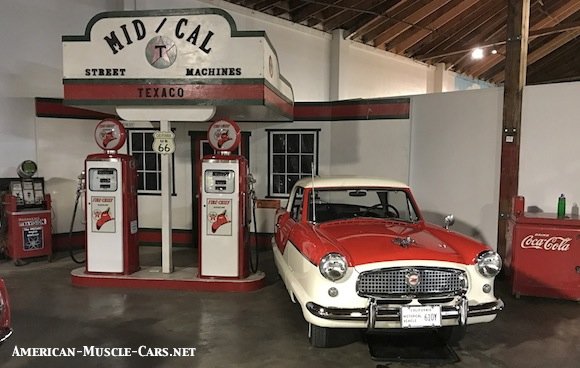
ABOVE: This cute little gas station is home to this cute little 1960 Nash Metro.
BELOW: If you look through the window of the Highway Cafe, there are place settings on the counter right down to the salt and pepper shakers.
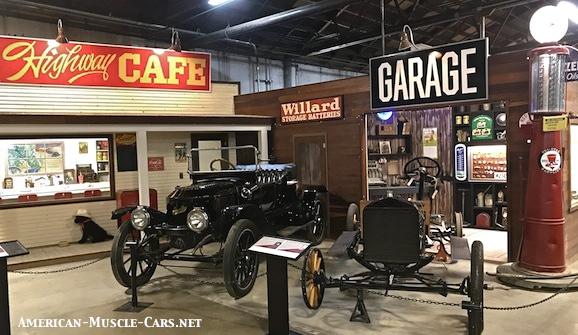
California Automobile Museum – Displays

ABOVE: There are lots of cool cutaway displays at the California Automobile Museums. This one is a flathead Ford V8 (with aluminum heads), and a 3-speed gearbox.
BELOW: This bare chassis shows the inner workings of a Model A Ford.

California Automobile Museum Sells Classic Cars
A CLASSIC CAR DEALERSHIP
The California Automobile Museum is also a classic car dealership. At first you almost walk by the dealership section, because it looks like another display. Until you see the modern-day prices on the windows. They had a nice collection of cars for sale while I was there. Most seemed to be priced fairly, and they all looked to be in excellent shape. This is one more way the Museum supports itself, so consider buying your next classic here, not to mention the eduction you’re likely to get on the car. These guys know their stuff.
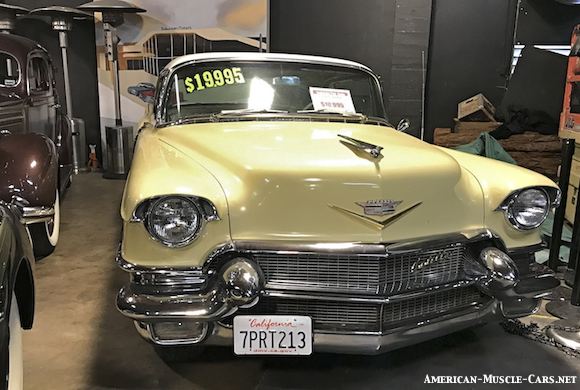
ABOVE: This sweet ’56 Caddie was for sale for just $19,995. Ready to go cruisin’.
BELOW: This ’67 Sunbeam Alpine is the 4-cylinder version of the Sunbeam Tiger, which came with a small block Ford V8 back in the day. These are lovely cars.
ABOVE: A fully-restored 1928 Ford Model A Roadster. It runs and drives, and they even offer a class at the Museum on how to drive one of these jalopies.
BELOW: “Crazy ’bout a Mercury”…this gorgeous ’40 Mercury convertible is just waiting for a new owner.

Special Exhibit: “Micro Cars”

MICROCAR EXHIBIT
Throughout the year, the California Automobile Museum rotates temporary ‘special exhibits’ in and out. During my visit, it was Microcars. But, as with all things in the Museum, it was more than a simple display of cars, it told a story, the story of the Microcar and their impact on society, or rather society’s impact on them. Fascinating display, educational, well-presented, and loads of fun to look at.
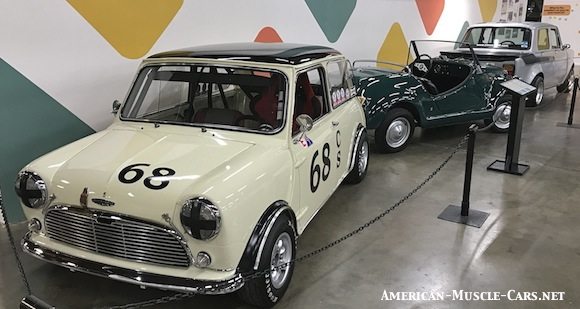
ABOVE: Perhaps the most famous microcar of all, the BMC Mini. This one is decked out in rally trim. Hard to imagine a car with 37 horsepower being considered a racer, but they only weighed 1,200 pounds, and they could hit 90 mph!
BELOW: This Nissan Figaro is a modern take on the Microcar.
ABOVE: This crazy thing is the 1957 Zundapp Janus 250. Which way is it going? Designed by aircraft-makers Donier, it was built by motorcycle-makers Zundapp with a Zundapp 250 engine for power. I wonder why it didn’t make it? Gone after just 2 model years.
BELOW: The inside is even stranger than the outside. If it weren’t for the steering wheel, it would be hard to figure out if it’s coming or going.
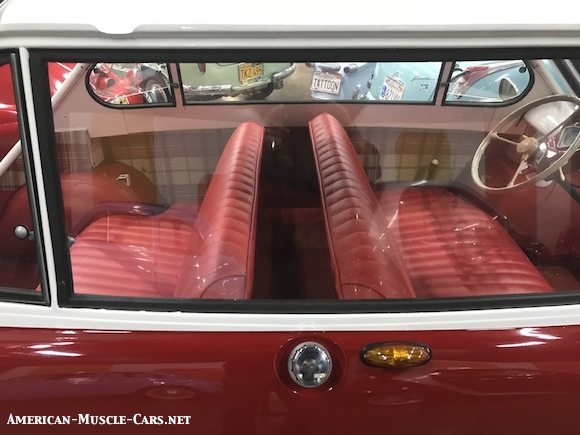
California Automobile Museum’s Volunteer Army
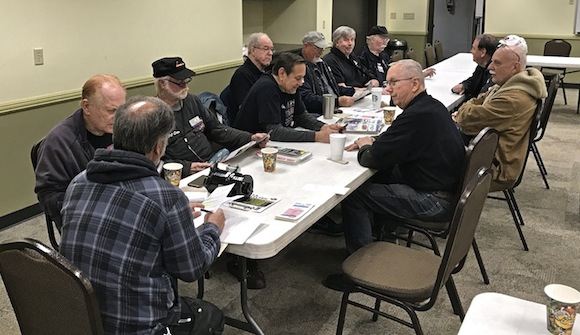
GATHERING THE TROOPS
Like most museums, the California Automobile Museum is a non-profit venture that is supported by donations and volunteers. And as you can imagine, it takes a lot of people to maintain a 72,000 square foot museum, and over 150 old cars. The goal is that every car in the museum run and drive, and they often do, on road trips to and from events, and in rallies, etc. The volunteers who maintain the cars in the museum are called “The Pit Crew”, and they meet every Wednesday to get it done. It starts with a morning meeting over coffee and donuts to lay out what needs to be done and who will do it. The Pit Crew is made up of (mostly) retired professional auto mechanics, service underwriters, body men, electrical experts, and good ol’ fashioned car enthusiasts. They bring a variety of skills and specialties with them. One of them, for instance, is a Cadillac expert whose personal collection includes six 1963 Caddies. Another is an expert on Studebakers. Once the agenda is decided upon, the group scatters to all corners of the museum, each with a mission. I went along for the ride, and to help if I could.

ABOVE: This lovely 1953 Chevy wouldn’t start, and it’s scheduled for a driving event in the next couple of weeks. So, we played with the carburetor and the spark until it came to life.
BELOW: Another one for the road. This one had a starter problem.
ABOVE: This World War 2-era Jeep (Ford) was also scheduled for a driving event, and the brake lights didn’t. I became the spotter, and we determined that, yep, the brake lights don’t work. I’m sure they worked it out after I left. Before they’ll take one out on the road, it has to be right.
Visit the California Automobile Museum
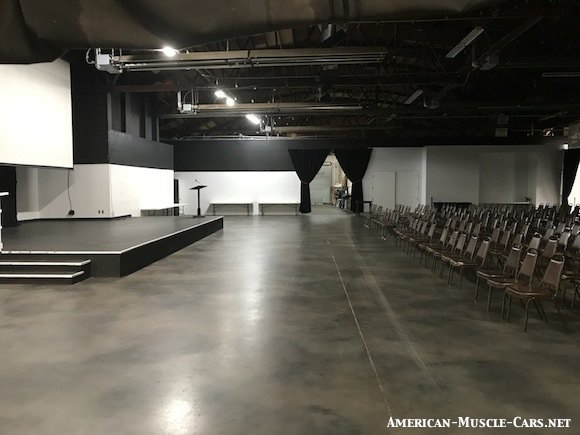
ABOVE: The California Automobile Museum also rents out for events like weddings, corporate meetings, wine tasting socials, and more, all with the backdrop of these cool old cars. Think about it for your next event.
BELOW: The Museum is located next to the historic Old Town district of Sacramento CA, along the mighty Sacramento River. Lots of history happened here, and it’s a perfect setting for a Museum that is dedicated to the history of cars.
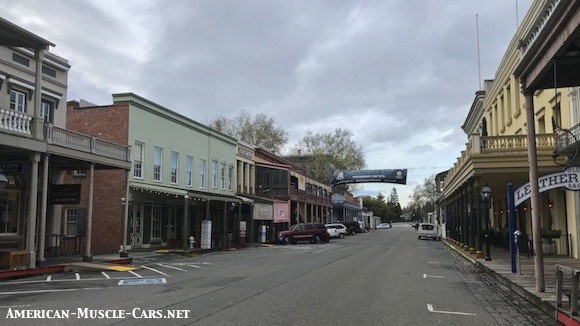
VISIT THE CALIFORNIA AUTOMOBILE MUSEUM SOON
The Museum is located at 2200 Front Street in Sacramento CA. They’re hours are 10am to 5pm (last admission at 4pm) every day except Tuesdays. And if you come on Wednesday, you can watch the “Pit Crew” play with the cars, start them up, and maybe drive them around. Admission is just $10 for adults, $9 for military/students/seniors, and $5 for kids 17-and-under (4-and-under are free). Visit their website for more info and all the details on their latest special exhibits and events at calautomuseum.org. And on the subject of events, here is a sampling of what’s coming up right now at the Museum:
* Model T Driving Class; May 4, 2019
* Memorial Day Car Show, May 27, 2019
* Model A Driving Class: June 1, 2019
* Downtown Sunday Drives, every 3rd Sunday
* …and more all the time. Get involved. Come to the Museum. Volunteer, if you can.


